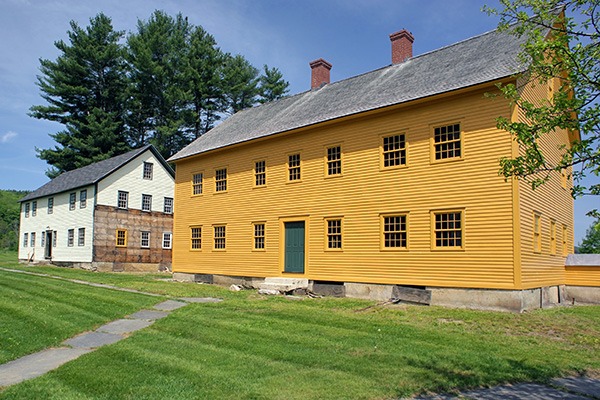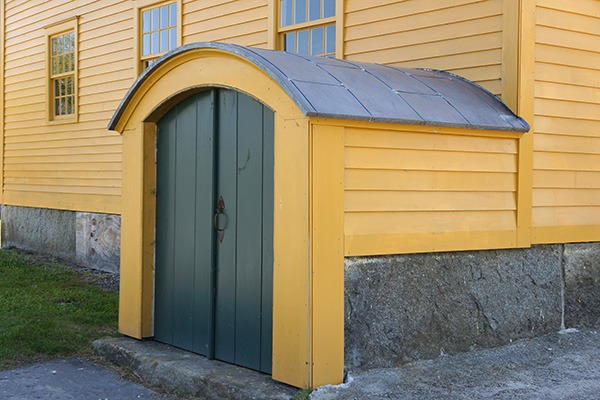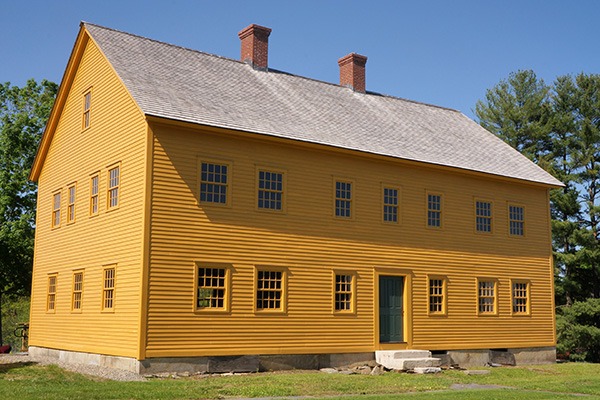Brethren’s East Shop
1819
Throughout the Enfield Shaker Village a variety of structures served the needs of the Brethren. One of these, the Brethren’s East Shop, was constructed in 1819. This building was originally located next to the first dwelling house on the present location of the Great Stone Dwelling. The Shakers moved this structure to its current location in 1834 to make room for their new stone dwelling house.
The building was used for a variety of purposes throughout its history. In 1820, the Enfield Church Family established a regular school and located it in the Brethren’s East Shop. This use is described in an Enfield Shaker manuscript:
The winter school for the boys was kept in what is now known as the tailor’s shop, and the summer school, at first, in the east room, in the present girls house; but in a short time it was concluded to have both schools kept in one room, and the tailors shop was fitted up for that purpose.
Though used early on as a schoolhouse, the Brethren’s East Shop was primarily used throughout its history as the tailoring workshop for the Enfield Shaker brothers. In Shaker communities throughout the United States, it was customary for Shaker tailors to create the clothing for the men of the community. A brother’s standard uniform consisted of a great coat, dress coat, waistcoat, and trousers. All coats were typically blue, drab, or gray in color. Trousers of blue and white checked cloth were worn on the Sabbath. Brown or gray cloth trousers served as everyday wear. Additionally, Shaker brothers would often wear a brown or drab cotton frock over their clothes while in the workshop. Each uniform was crafted down to the most minute detail and designed for a particular occasion or time of the year.
Despite this level of workmanship, most Shaker tailors felt that their jobs were tedious and inefficient. As part of this desire for greater efficiency, these tailors attempted to reduce their work to a science based on the belief that anyone could be trained in this profession with right guide. This systematic approach to tailoring is represented by Isaac Newton Youngs’s A Short Treatise on the Processing of Cutting by the Square and Plumb Rule with Some General Observations on the Business of Tailoring (1828) and Hervey L. Eads’s The Tailor’s Division System: Founded Upon, And Combined with Actual Measurement (1849).
Common colors for these pieces were blue, drab, brown, and grey.




